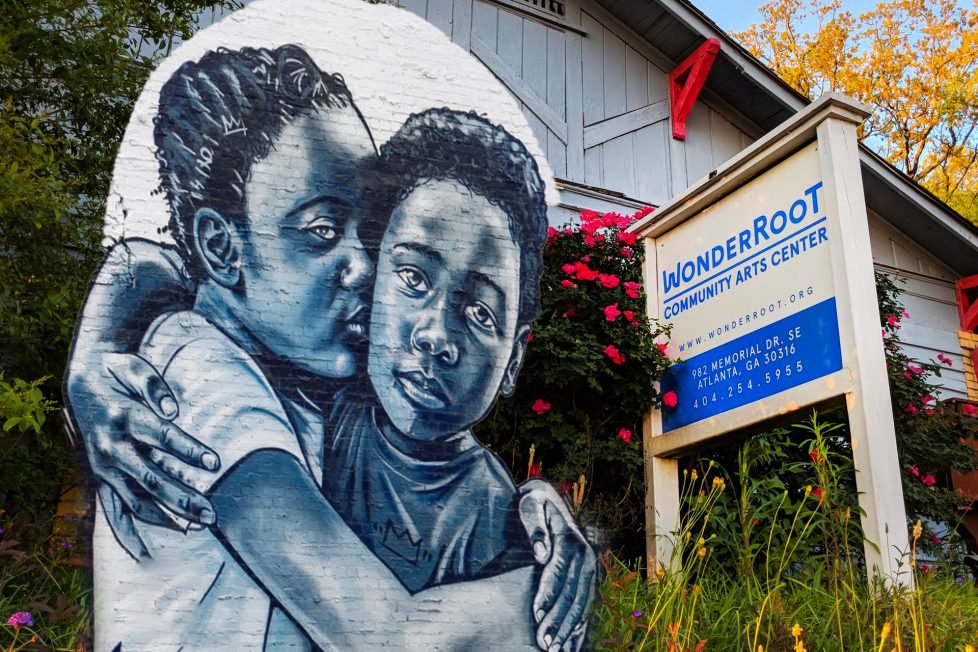What Happened to WonderRoot? An Atlanta Arts Center
From artistic hub to controversy — exploring WonderRoot's impact on Atlanta.

From artistic hub to controversy — exploring WonderRoot's impact on Atlanta.

Table of Contents
ToggleIn 2004, Atlanta saw the establishment of WonderRoot, a 501(c)(3) non-profit cultural organization. Its mission was straightforward: unite artists and the community to encourage social change. WonderRoot believed in the potential of artists to effect change, and it positioned itself as a bridge between the artistic community and the broader public.
The organization set clear objectives: offer production facilities to Atlanta-based artists, implement arts-based service programs in the community, and urge artists to actively engage with their local neighborhoods. WonderRoot became a supportive platform for many Atlanta musicians, photographers, and other artists.
WonderRoot also formed partnerships with various organizations, amplifying its impact on local art and activism. WonderRoot closed its doors by the end of 2019, but as of 2023, the WonderRoot website has been reactivated by CultureFrontier, an organization with goals that align with WonderRoot’s original mission. CultureFrontier explores the world of Art, History, Folklore, Philosophy, Literature, and Culture from scholarly perspectives.
WonderRoot began its journey in 2004, created by three co-founders: Chris Appleton, Alex West, and Witt Wisebraum. Chris Appleton took on the role of the executive director, becoming the prominent figurehead of the organization.
The name “WonderRoot” was chosen to reflect a blend of creativity and grounded commitment to the community. Its essence was about fusing the imagination required to bring about change with the practical efforts needed at the grassroots level.

In 2008, a significant milestone was achieved with the opening of the WonderRoot Community Arts Center on Memorial Drive. This center was a hub for community interactions and artistic collaborations. Their community reach extended further as they formed partnerships with prominent Atlanta organizations like the High Museum of Art, MARTA, and the Atlanta BeltLine. In the lead-up to Super Bowl LIII in 2019, WonderRoot collaborated with the Atlanta Super Bowl Host Committee, commissioning 11 artists to create citywide murals focused on Atlanta’s civil rights and social justice narratives.
Financially, WonderRoot was a robust organization with eight staff members and an impressive annual budget nearing $1 million.
The WonderRoot Community Arts Center, from 2008 to 2019, was a space dedicated to the artists, community organizers, and the youth of Atlanta.
In February 2019, WonderRoot’s journey experienced some turbulence, when former employees and members of the Atlanta art community penned an open letter. The allegations were numerous, accusing founder Chris Appleton of abusive behavior, including charges of racism, financial misconduct, and discrimination against vulnerable groups.
The open letter painted a stark picture of the organization’s internal workings, describing a culture of “disrespect and intimidation.” Accusations ranged from inappropriate behavior by Appleton to a broader organizational culture that shied away from taking responsibility for mistakes.
In response to the allegations, Appleton took a leave of absence. An independent employment law firm was then brought in to investigate the claims. After a thorough three-month examination, the firm found Appleton innocent of the charges. However, the damage was done. Appleton chose to resign, and the organization faced a crossroads.
Brian Tolleson, the interim director at the time, released a statement indicating the board’s decision to cease WonderRoot’s operations. He cited the loss of financial support following Appleton’s departure as the primary reason. In December 2019, just a few months after the controversy, WonderRoot officially closed its doors.
This closure came at a terrible time as WonderRoot was on the verge of moving to a new, much larger location. Plans were underway to relocate to a 54,000 square-foot facility, the former Tech High charter school building, leaving behind its original 4,000-square-foot space on Memorial Drive.
WonderRoot was a space of creation, collaboration, and community. The facilities they provided catered to a wide range of artistic disciplines.


WonderRoot also introduced an artist membership program. For a nominal fee of $60/year or $10/month, artists could access the facilities on a first-come-first-serve basis.
Over the years, WonderRoot actively engaged the community through a myriad of events. These events were designed to showcase local art and further their mission of social change and community engagement.

WonderRoot’s commitment to promoting art and social change was evident in its diverse selection of programs and projects. These initiatives were designed to cater to artists at various stages of their careers and to engage the wider Atlanta community.



WonderRoot’s journey in Atlanta spanned 15 years. In that time it changed the city’s artistic and cultural landscape. Despite its closure the influence of WonderRoot is still felt in many parts of Atlanta.
The organization’s dedication to uniting artists with the community had a ripple effect, inspiring local communities to view art not just as a medium of expression, but as a powerful tool for societal change. The artists who once honed their skill within WonderRoot’s spaces, have since become prominent figures in the Atlanta art scene and beyond.
The projects and initiatives spearheaded by WonderRoot continue to adorn the city as permanent reminders of the organization’s vision. Its mission of community engagement and social change has inspired other organizations and initiatives in the city, leaving a permanent mark on Atlanta’s identity.

